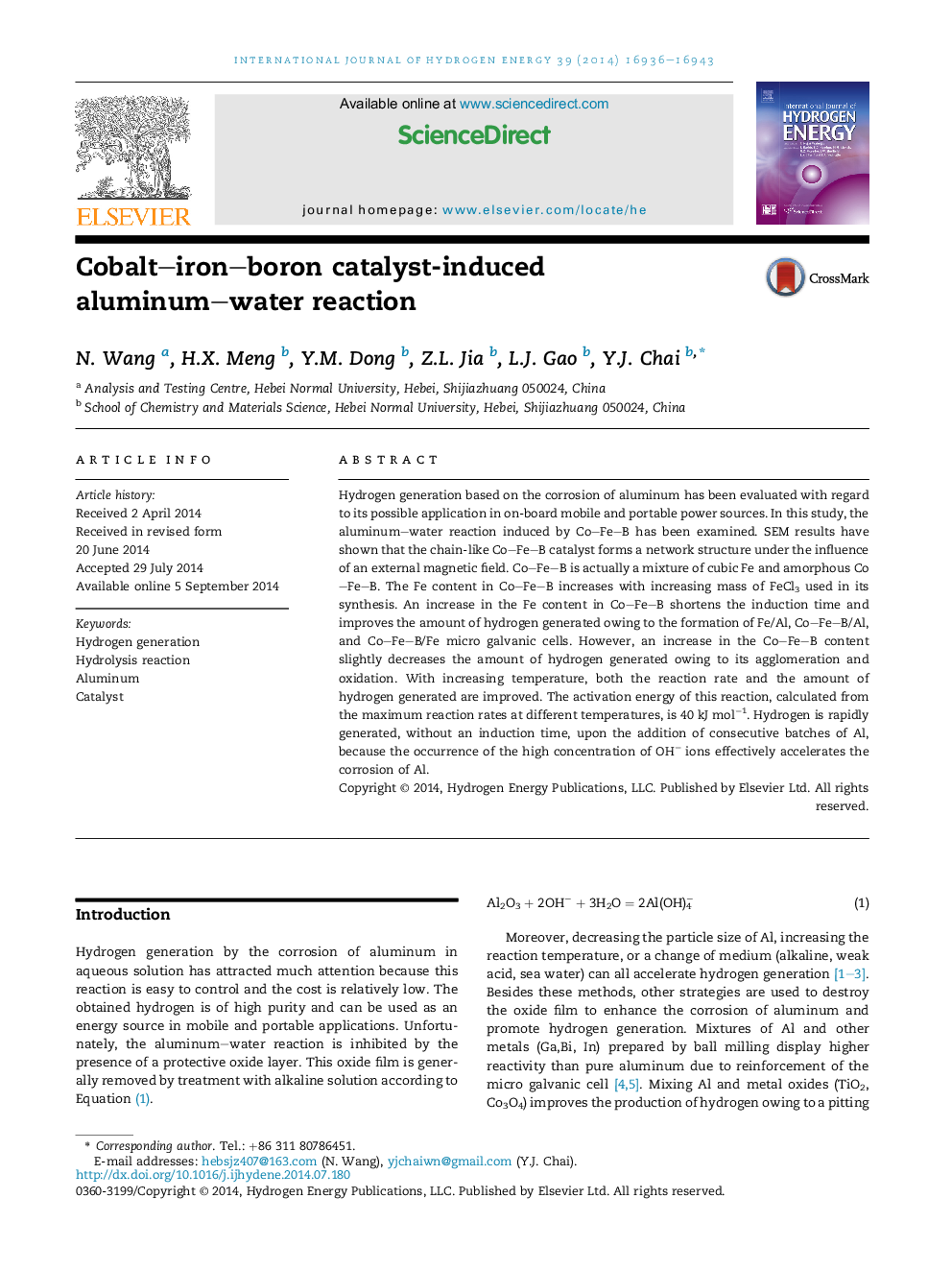| Article ID | Journal | Published Year | Pages | File Type |
|---|---|---|---|---|
| 1272150 | International Journal of Hydrogen Energy | 2014 | 8 Pages |
•The chain-like Co–Fe–B catalyst forms a network structure.•An increase in the Fe content in Co–Fe–B improves the amount of hydrogen.•An increase in the Co–Fe–B content slightly decreases the amount of hydrogen.•Hydrogen is rapidly generated upon the addition of consecutive batches of Al.
Hydrogen generation based on the corrosion of aluminum has been evaluated with regard to its possible application in on-board mobile and portable power sources. In this study, the aluminum–water reaction induced by Co–Fe–B has been examined. SEM results have shown that the chain-like Co–Fe–B catalyst forms a network structure under the influence of an external magnetic field. Co–Fe–B is actually a mixture of cubic Fe and amorphous Co–Fe–B. The Fe content in Co–Fe–B increases with increasing mass of FeCl3 used in its synthesis. An increase in the Fe content in Co–Fe–B shortens the induction time and improves the amount of hydrogen generated owing to the formation of Fe/Al, Co–Fe–B/Al, and Co–Fe–B/Fe micro galvanic cells. However, an increase in the Co–Fe–B content slightly decreases the amount of hydrogen generated owing to its agglomeration and oxidation. With increasing temperature, both the reaction rate and the amount of hydrogen generated are improved. The activation energy of this reaction, calculated from the maximum reaction rates at different temperatures, is 40 kJ mol−1. Hydrogen is rapidly generated, without an induction time, upon the addition of consecutive batches of Al, because the occurrence of the high concentration of OH− ions effectively accelerates the corrosion of Al.
